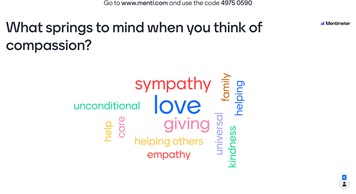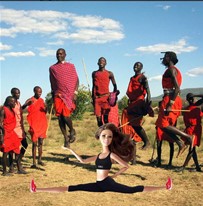(2021-2022) Compassion Beyond the Developing World
Written by Nobusuke Akaike, Charlotte Antilogus, Bethany Croucher, Natalie, Kaza, Tilly Neville, Samson Page, and Madeleine Raggett.
Aims
By the end of the lesson, students will understand:
- That who people choose to help is based on their political assumptions of who they see as ‘in need’
- That we all have these biases and they have a considerable impact on our understanding of important ideas such as compassion
- That these biases and the choices based upon them are informed by global unequal power relations
- That this unequal power relation does not simply span between nations, but also within each nation, and can come in many forms
- That anthropology’s look at compassion is important in exposing these kinds of power relations and denaturalising the way we look at humanitarian action as a top-down viewpoint
Resources
- Example Google Docs Presentation – compassion SOAN beyond dev
- Computer, Projector and Screen
- Access to PowerPoint
- Mobile phone and access to wifi
- Mentimeter website (menti) – this is a website that allows students to input their answers anonymously to pre-designed questions. Answers can be made into mind maps or graphs which enables easy discussion about the question and encourages collaborative work.
- YouTube
Background (for teachers)
Scholars in anthropology and beyond complicate our understanding of compassion by relating it to the concepts of ‘pity’ and ‘inequality’, for example.
Political philosopher Hannah Arendt argues that compassion exists in a face-to-face situation and that pity arises in a more public, distant situation (Boltanski 1999). In other words, Arendt suggests that distance creates pity and not compassion.
Social anthropologist Didier Fassin (2012) argues that humanitarianism is always a mix of assistance and domination, of solidarity and inequality. In other words, Fassin shows that the compassion central to humanitarian action inherently consists of domination, inequality, and power.
Political and legal anthropologist Heath Cabot (2012) analyses how the process of becoming an asylum seeker in Greece is filled with uncertainty, with some being favoured unfairly over others. This humanitarian aid takes place in Greece which is seen as a ‘developed country’ and this reading therefore complicates the assumption humanitarianism only happens in developing countries.
Social anthropologist Miriam Ticktin (2006) ethnographically shows that medical aid reproduces inequalities, as migrants purposefully infect themselves with HIV to qualify as ‘good’ victims who deserve humanitarian compassion. Like Cabot’s work, this aid takes place in France, a developed country.
These two ethnographic examples illustrate the theoretical claims made by Fassin and Arendt. They show how compassion is political – it is enmeshed in global power relations and produced by cultural and political assumptions of who is ‘in need’ (and who is not).
Student Brief
Anthropology is the cross-cultural study of human society and culture. Its main aim is to question assumptions we may have of the world in order to understand ourselves and others better. Within this lesson we will look at compassion in relation to humanitarian aid anthropologically. Humanitarian aid is the material and logistical assistance offered to those in need of help and is often assumed to be given to developing countries from developed countries. The concept of ‘developing countries’ refers to countries with a low quality of life, less developed economy and diminished technological infrastructure relative to other more industrialized countries. Meanwhile ‘developed countries’ are considered to have a high quality of life, a developed economy and developed technological infrastructure. Using anthropological work on compassion we plan to complicate the assumption humanitarian aid only takes place in developing countries.
To prepare for this lesson, start thinking about how you understand ‘compassion’ and what other things you associate it with.
Sections 1 – 4
Section 1 – Outlining objectives
- Revisit Aims section.
- Briefly go over and clarify ‘developing’ vs ‘developed’ countries (BBC bitesize definition).
Section 2 – Exploring compassion

- Exploring how the class understands and defines compassion using the menti task below:
- Menti Task 1: Each student comes up with three words for what they understand ‘compassion’ as (see below mind map with potential answers). You might expect answers such as love, sympathy, giving, kindness, etc.
- Menti Task 2: group discussion – where does compassion come from? You might expect answers such as ‘from a feeling’, ‘from the heart’, etc.
- Then show that compassion is more that a ‘natural’ impulse or feeling:
- Menti Task 3: group discussion, how would we choose to show our compassion? The students will debate how they would distribute £100? You might expect answers such as Oliver Twist and Annie receiving more of the £100 and Tony Stark and Homer Simpson receiving less. Teachers can change the characters to accommodate the specific interests of their students.
- Teachers will root these activities and the complication of compassion as natural in Arendt’s and Fassin’s understandings of the concept. Through this, students should reach the understanding that the decisions they have just made were based on preconceived ideas of what compassion is, and that this idea is more complicated than that.
Section 3 – Compassion beyond the developing world
- Now that the students have been introduced to how compassion is entangled within problems of inequality, use Ticktin and Cabot’s ethnographic examples to expand their understanding, by situating compassion within the developed world.
- To further illustrate Arendt and Fassin’s ideas in an age-friendly way, use the examples from the “barbiesavior” Instagram (below). This should engage them in how top-down patterns of aid may be problematic, or deemed patronising, as compassion is given to those considered in the poorest conditions. It also introduces them to colonialism, a key topic addressed in anthropology, as aid is often seen to be given to ‘third-world’ countries, despite being needed even within the UK.


Source: Instagram 2019
- Teachers should encourage the students to research and apply this to real-word topics, such as with the European migrant crisis. Note, this may contain distressing material so should be approached sensitively.
Section 4 – Summary
- Revisit the key points and learning objectives: repeat Menti task 1 to show how class understandings of compassion might have changed from their initial thoughts on the subject.
- Get into small groups to discuss how their understandings have changed, with each group then sharing with the class what they have learnt and taken away from the lesson.
Bibliography
BarbieSavior (2021). Instagram. [online] www.instagram.com. Available at: https://www.instagram.com/barbiesavior/.
BBC Bitesize (2021). ‘Differences in levels of development between developing countries’. Available at: https://www.bbc.co.uk/bitesize/guides/zt666sg/revision/1
Boltanski, L. (1999). Distant Suffering. [online] assets.cambridge.org. [online] Available at: https://assets.cambridge.org/97805216/59536/excerpt/9780521659536_excerpt.pdf.
Cabot, H. (2012) ‘The Governance of Things: Documenting Limbo in the Greek Asylum Procedure’, Political and Legal Anthropology Review (PoLAR), 35(1), pp. 11–29.
Child Poverty Action Group (2020). ‘Child poverty facts and figures’. [online] CPAG. Available at: https://cpag.org.uk/child-poverty/child-poverty-facts-and-figures
Fassin, D. (2012) Humanitarian Reason: A Moral History of the Present. Berkeley: University of California Press.
Paul, R. and Elder, L. (2001) Critical Thinking: Tools for taking charge of your learning and your life. Upper Saddle River, NJ: Prentice Hall.
Ticktin, M. (2006) ‘Where Ethics and Politics Meet: The Violence of Humanitarianism in France’, American Ethnologist, 33(1), pp. 33–49.
UnicefUK (2012). ‘Pupils speak out about UK child poverty’. [online] YouTube. Available at: https://www.youtube.com/watch?v=aBVYA-3ASt0

0 Comments